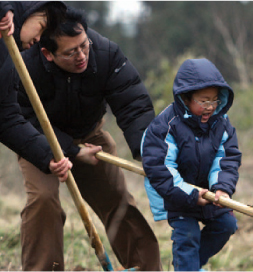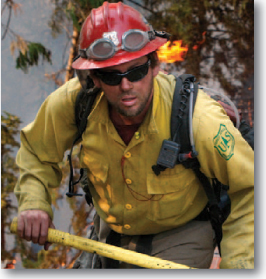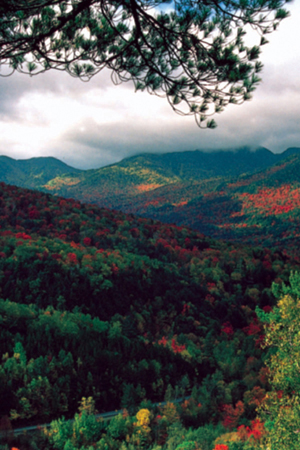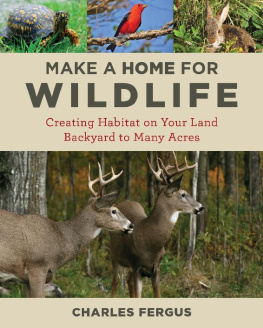FORESTS AND GRASSLANDS
THE LIVING EARTH
FORESTS AND GRASSLANDS
EDITED BY JOHN P. RAFFERTY, ASSOCIATE EDITOR, EARTH AND LIFE SCIENCES

Published in 2011 by Britannica Educational Publishing
(a trademark of Encyclopdia Britannica, Inc.)
in association with Rosen Educational Services, LLC
29 East 21st Street, New York, NY 10010.
Copyright 2011 Encyclopdia Britannica, Inc. Britannica, Encyclopdia Britannica,
and the Thistle logo are registered trademarks of Encyclopdia Britannica, Inc. All
rights reserved.
Rosen Educational Services materials copyright 2011 Rosen Educational Services, LLC.
All rights reserved.
Distributed exclusively by Rosen Educational Services.
For a listing of additional Britannica Educational Publishing titles, call toll free (800) 237-9932.
First Edition
Britannica Educational Publishing
Michael I. Levy: Executive Editor
J.E. Luebering: Senior Manager
Marilyn L. Barton: Senior Coordinator, Production Control
Steven Bosco: Director, Editorial Technologies
Lisa S. Braucher: Senior Producer and Data Editor
Yvette Charboneau: Senior Copy Editor
Kathy Nakamura: Manager, Media Acquisition
John P. Rafferty: Associate Editor, Earth Sciences
Rosen Educational Services
Alexandra Hanson-Harding: Editor
Nelson S: Art Director
Cindy Reiman: Photography Manager
Matthew Cauli: Designer, Cover Design
Introduction by Jeanne Nagle
Library of Congress Cataloging-in-Publication Data
Forests and grasslands / edited by John P. Rafferty.
p. cm. (The living earth)
In association with Britannica Educational Publishing, Rosen Educational Services.
Includes bibliographical references and index.
ISBN 978-1-61530-394-6 (eBook)
1. Forests and forestry. 2. Grasslands. I. Rafferty, John P.
SD373.F62 2011
578.73dc22
2010019061
On the cover: Great Spotted Woodpecker (Dendrocopos Major), Baarn, The Netherlands.
Gertjan Hooljer
On : Mixed evergreen and hardwood forest on the slopes of the Adirondack
Mountains near Keene Valley, New York. Jerome Wyckoff
On : Boreal forest, U.S., dominated by spruce trees
(Picea). Erwin & Peggy Bauer/Bruce Coleman Ltd.
CONTENTS












INTRODUCTION

W hen attention to the smallest detail detracts from a persons comprehension of the larger situation at handthe big pictureit is said that he or she cant see the forest for the trees. In the strictest sense, this idiom misses the mark. Ecologists and other biogeographic scientists, however, could easily argue that the only way to truly see a forest is to pay attention to the trees themselves and the activity occurring between each one.
Ecosystems are geographic areas that are home to similar biota (plants and animals of an area) that have adapted to a particular regions environmental conditions. Forest ecosystems are dominated by trees, and grasslands are even easier to identify, as they are dominated by species of wild grasses.
This book takes readers deep inside a variety of forests and out across the sweeping vistas created by various grasslands. In the process, they will encounter the elements inherent to each particular ecosystem, study the climatic conditions that surround these areas, and absorb the importance of each of these biomes to the overall balance of life on Earth. General observations will be supported through an examination of specific, notable forests and grasslands around the globe.
Forests may be divided into a number of different categories, each defined by the type of trees they contain. Soil qualitychiefly as it pertains to the abundance of nutrientsthe availability of sunlight, the amount of precipitation the soil receives, and the range of temperature the soil experiences determine which tree species grow in a particular area. Warm weather, high humidity, and copious amounts of rainfall favour the trees of the tropical rainforest, a highly diverse range of plants that includes palms, cycads, and the valuable hardwood teak, among others. In fact, the worlds tropical rainforests, which are located near the Equator, contain the most biological diversity of any ecosystem on the planet. High levels of rain and humidity tend to leach many nutrients from the soil in tropical rainforests, and the remaining minerals tend to be bound up in the plants themselves. What nutrients remain in the soil are concentrated mainly in the top layer. Consequently, trees with shallow root systems do well in this type of ecosystem.
Trees of the rainforest are typically tall, reaching heights of 30 to 50 metres (98 to 164 feet). They generally grow close together, and their broad, rubbery leaves overlap high above the forest floor to form the canopy. A large number of species have adapted themselves to live among the lofty branches of the rainforest canopy: a diverse collection of insects, colourful parrots and birds of paradise, and tree-dwelling herbivores such as monkeys and flying squirrels. Smaller trees also populate the rainforest in an area called the understory, growing in whatever light gets filtered through the leafy roof of the canopy. The forest floor is covered with decomposing plant and animal matter and debris. Each of these forest layers (the canopy, the understory, and the forest floor) is home to diverse groups of animals that specialize on the opportunities provided by these unique environments.
In contrast boreal, or taiga, forests occur in cold regions. The word boreal translates to northern, and climates in the north are notoriously harsh. The word taiga (Russian: little sticks) originally referred to Russias northern forests, but it is also used to describe boreal forests. The boreal forest is dominated by conifers, which have multiple small needles that store nutrients for longer periods than do broad leaves. Alternatively, broad-leaved trees depend on longer periods of warmth to maintain optimal rates of photosynthesis, a process that converts sunlight to chemical energy. As a result, broad-leaved trees are not fit to survive the long periods of darkness and cold characteristic of subarctic regions. The list of conifers includes firs, pines, spruces, and other species associated with the term
Next page





























